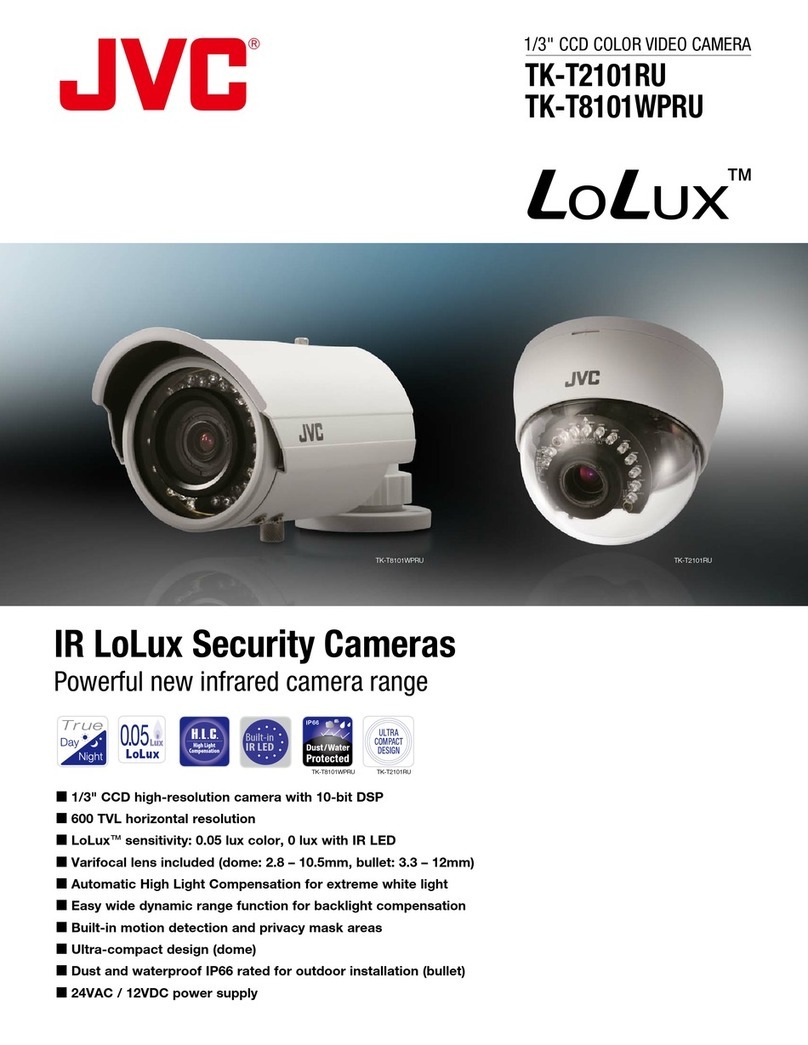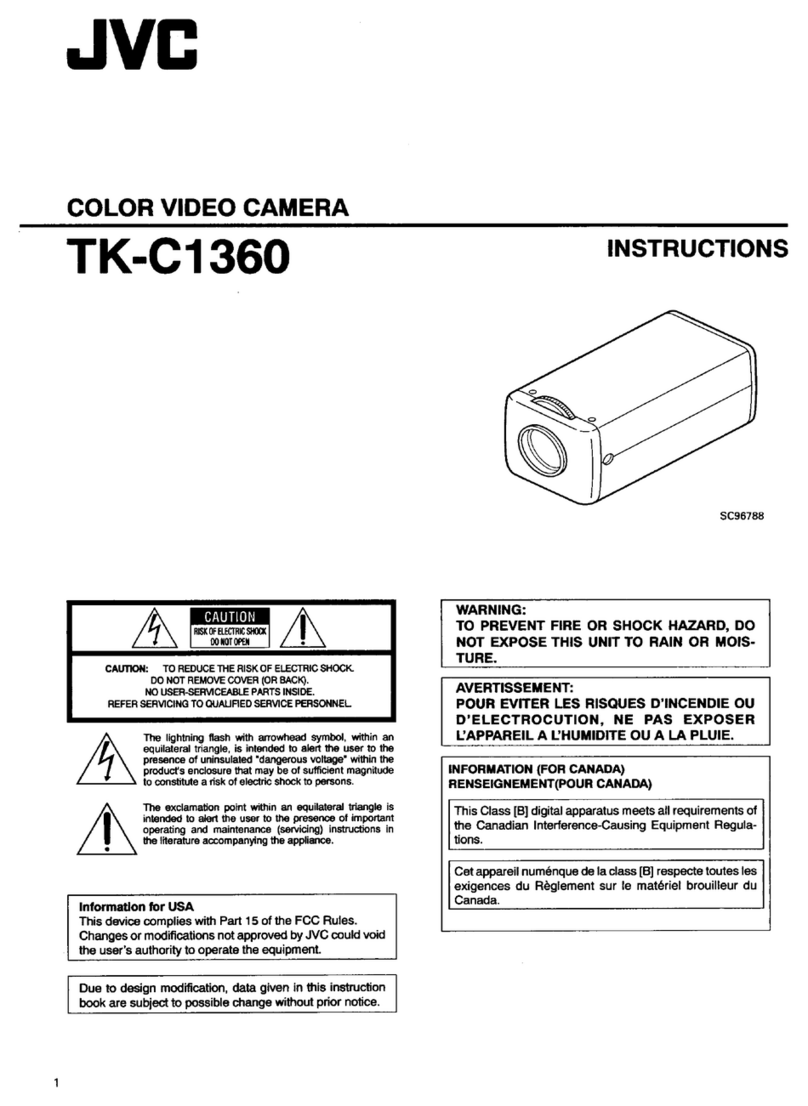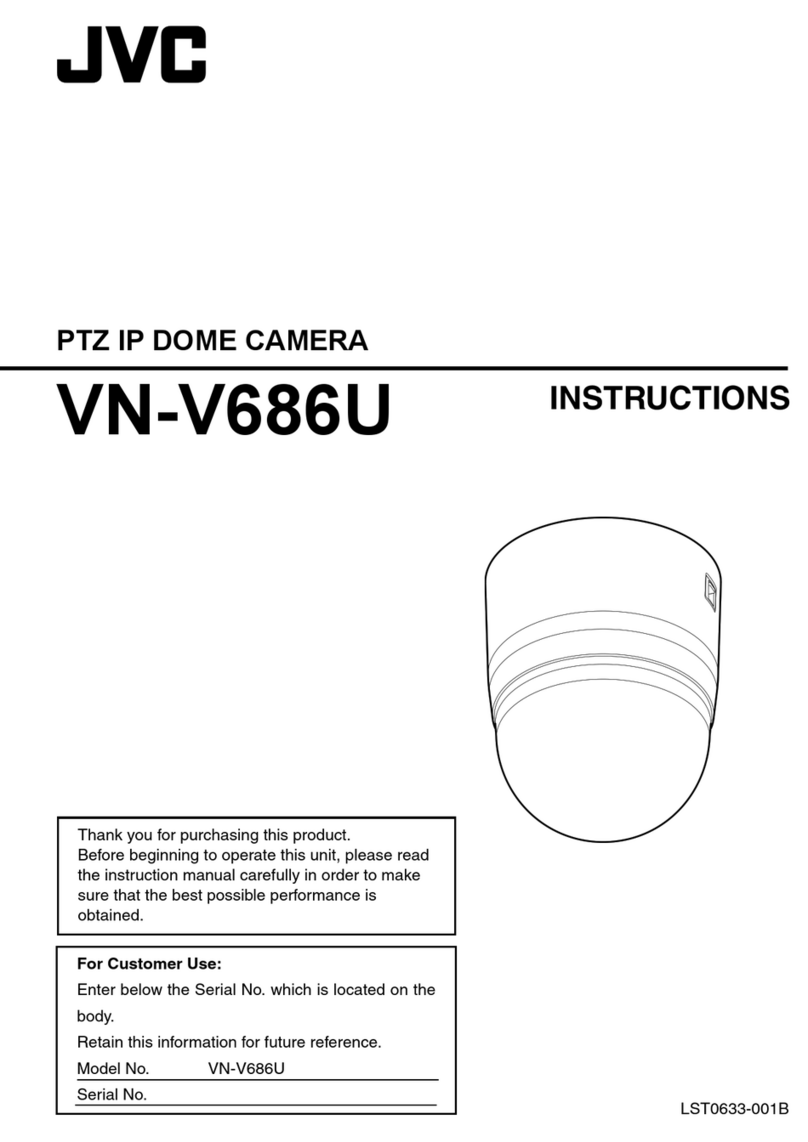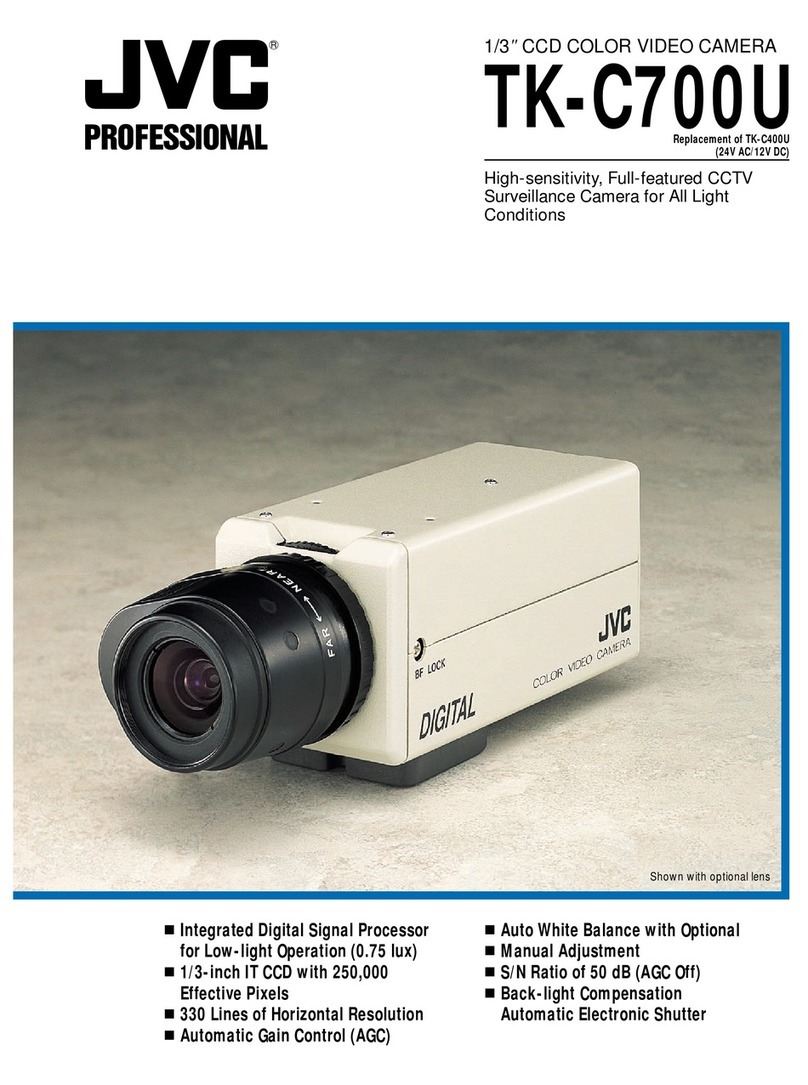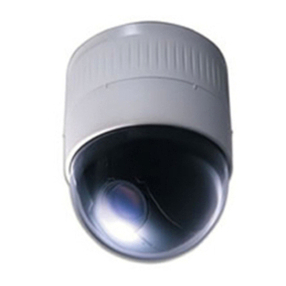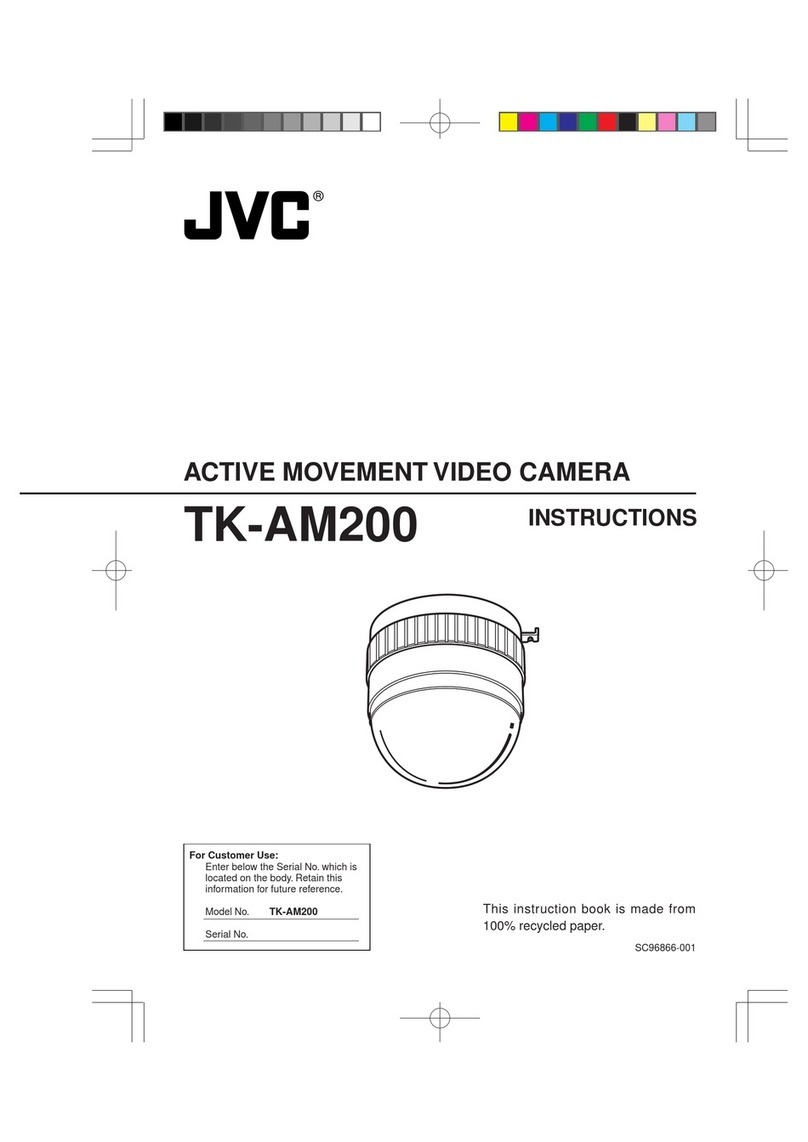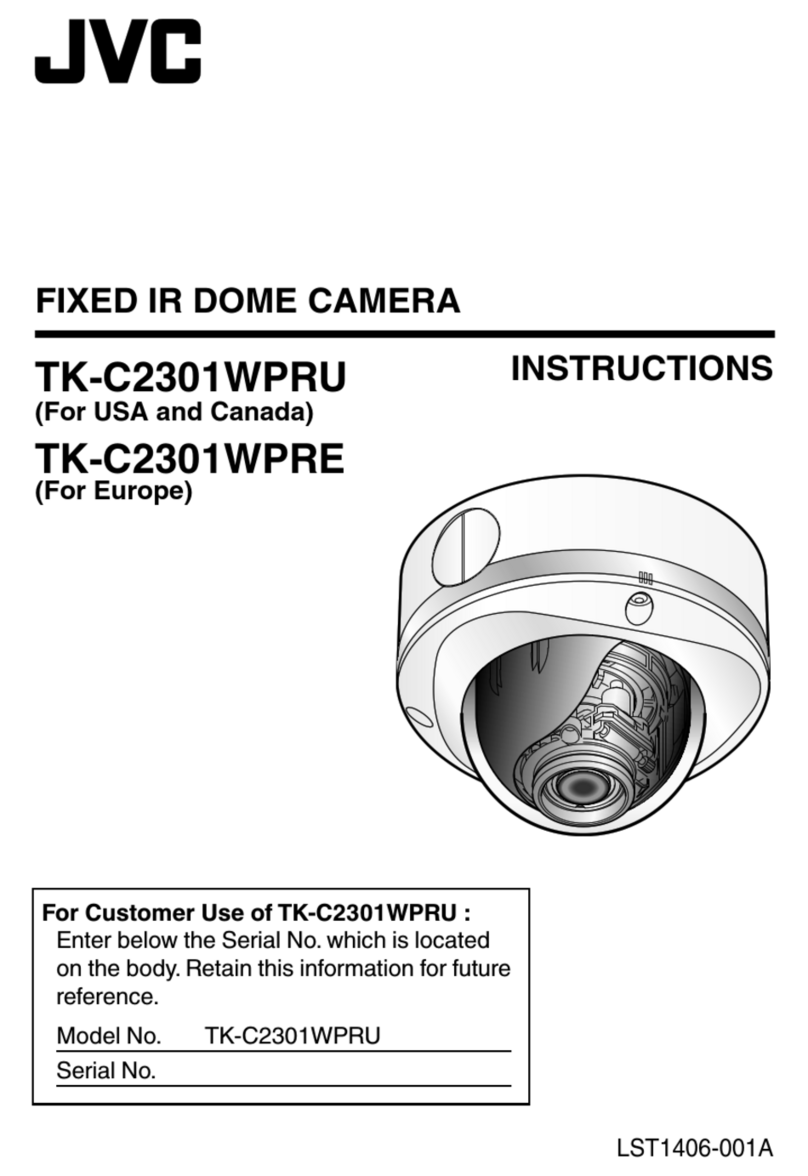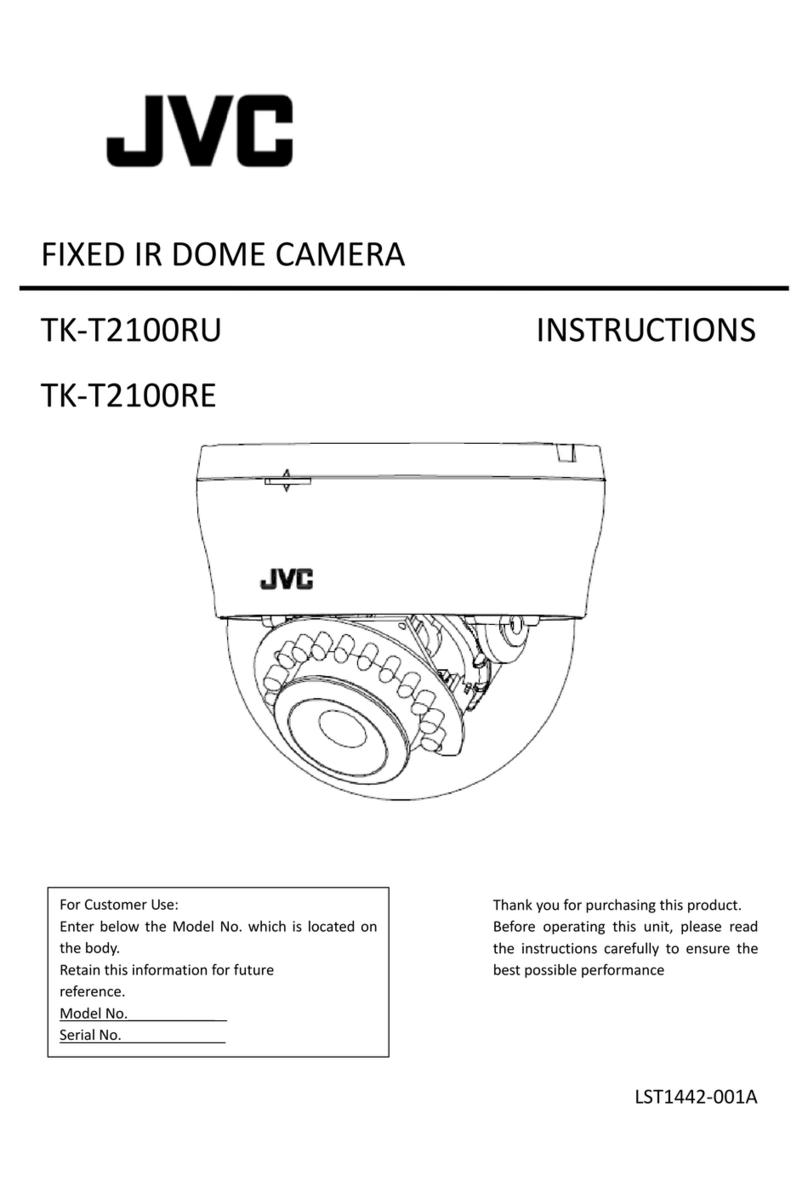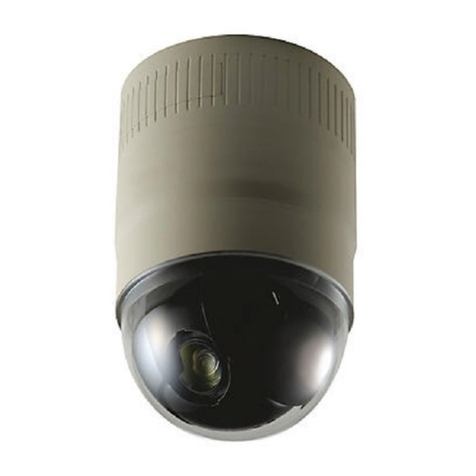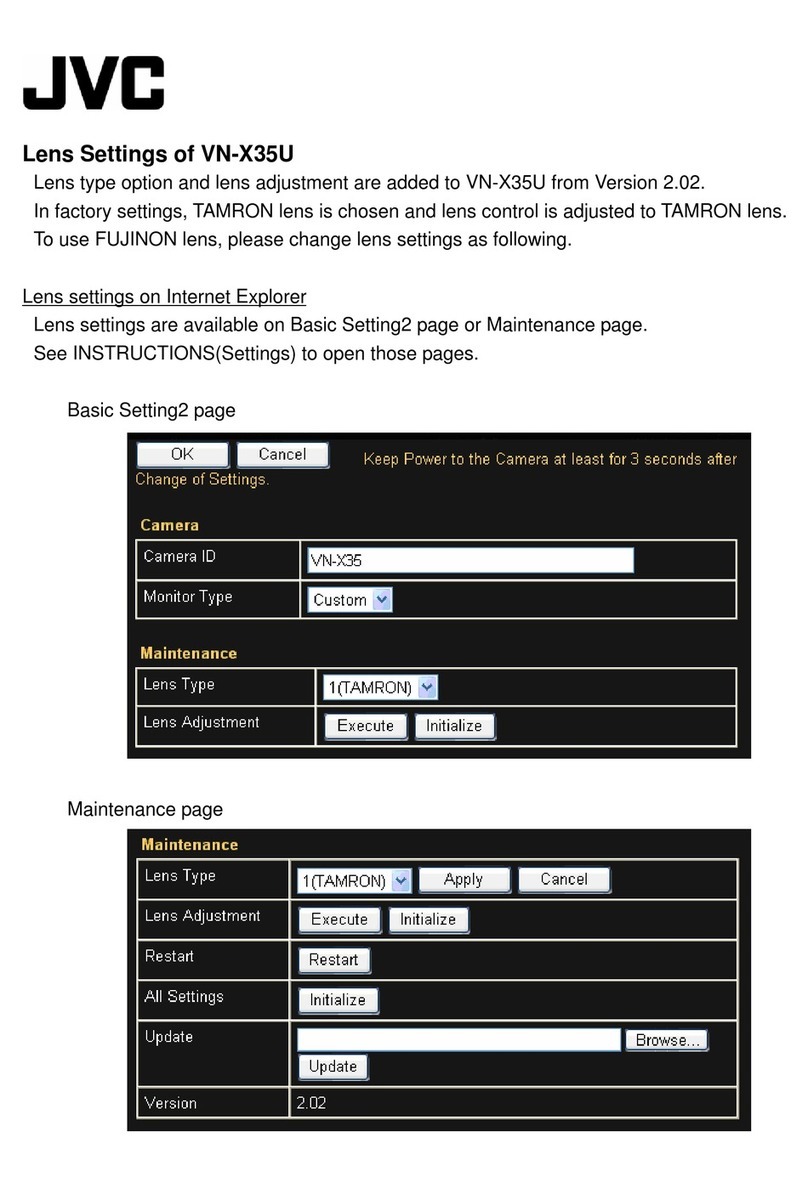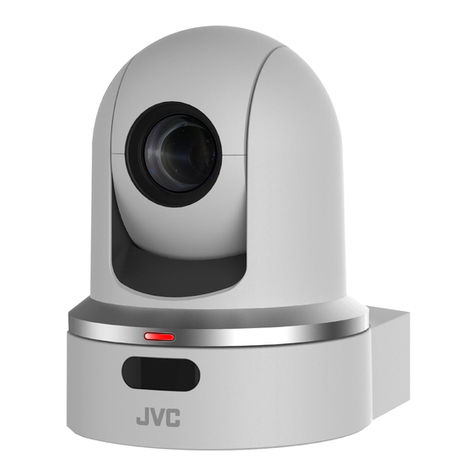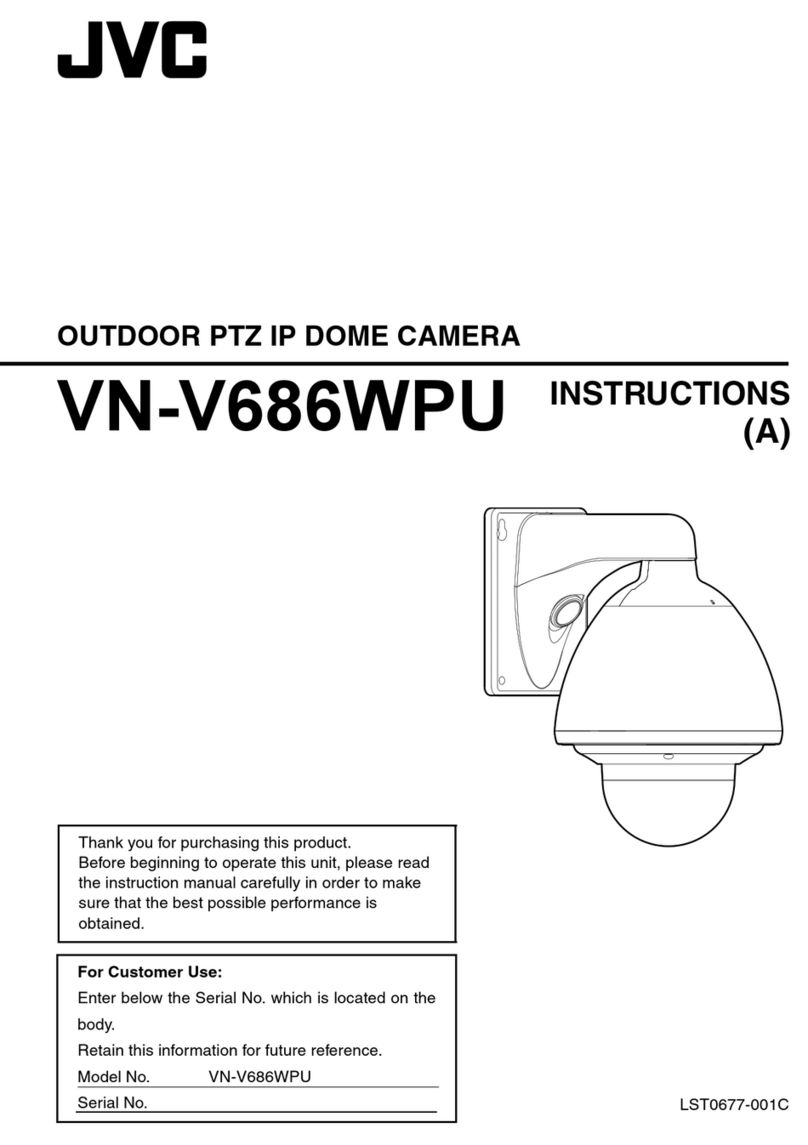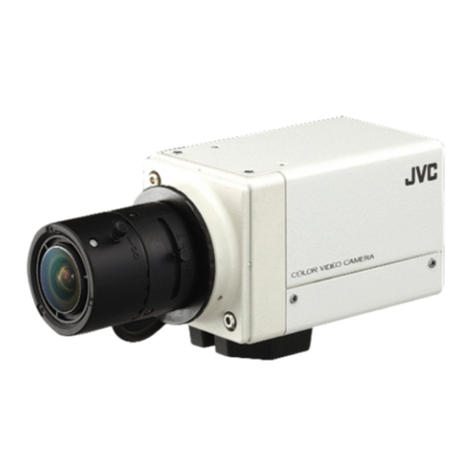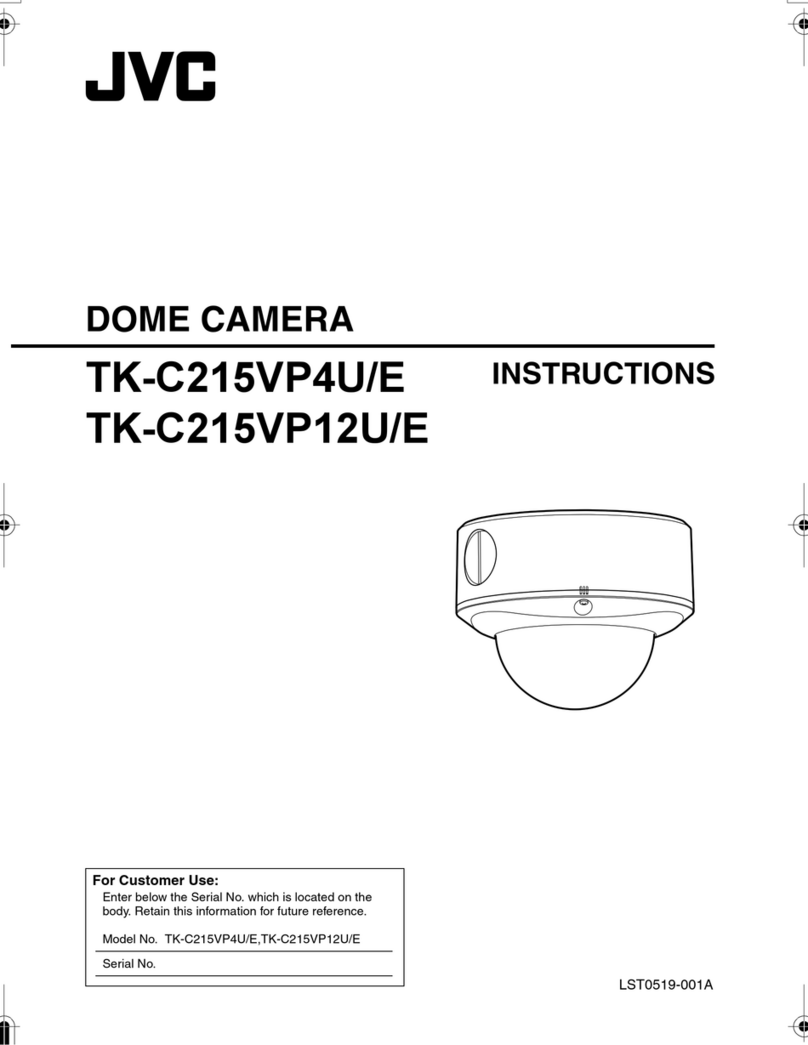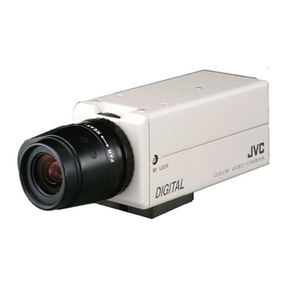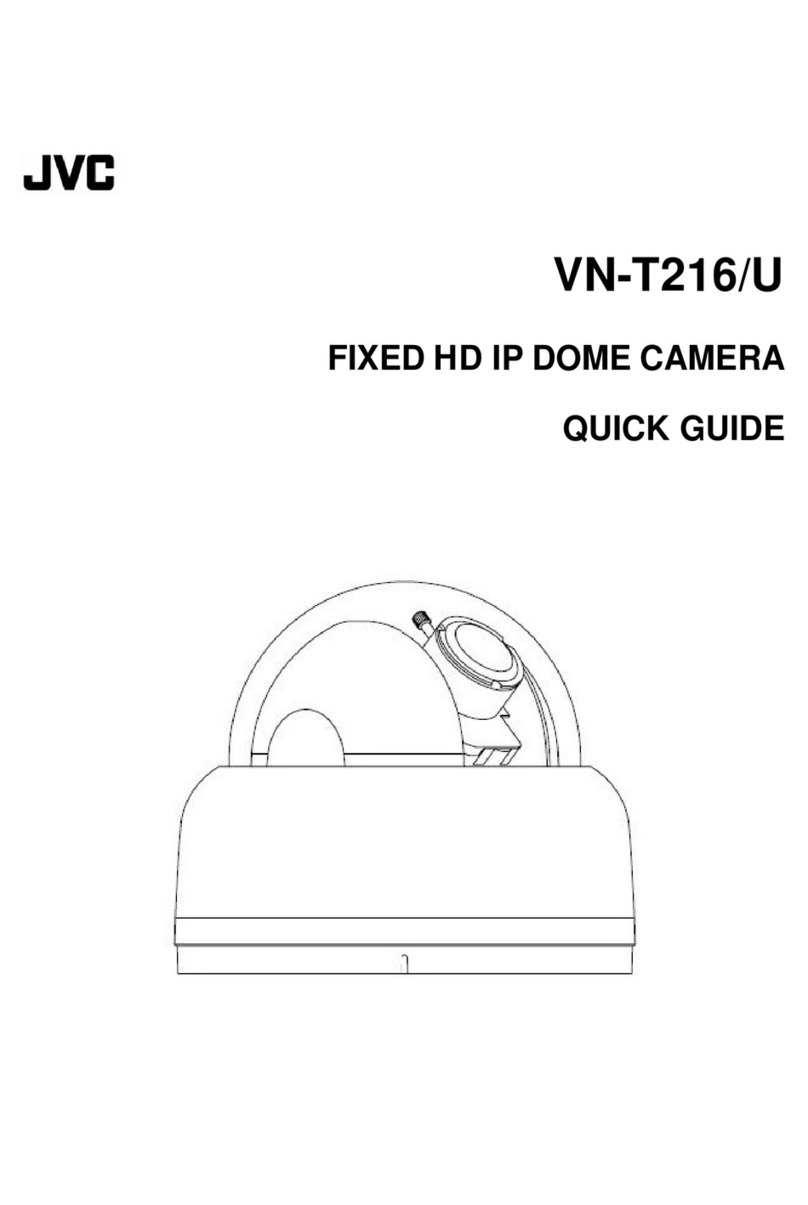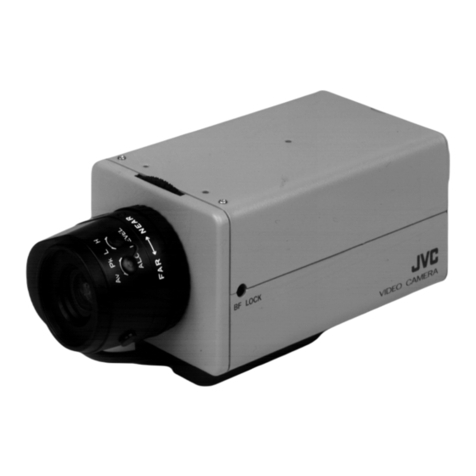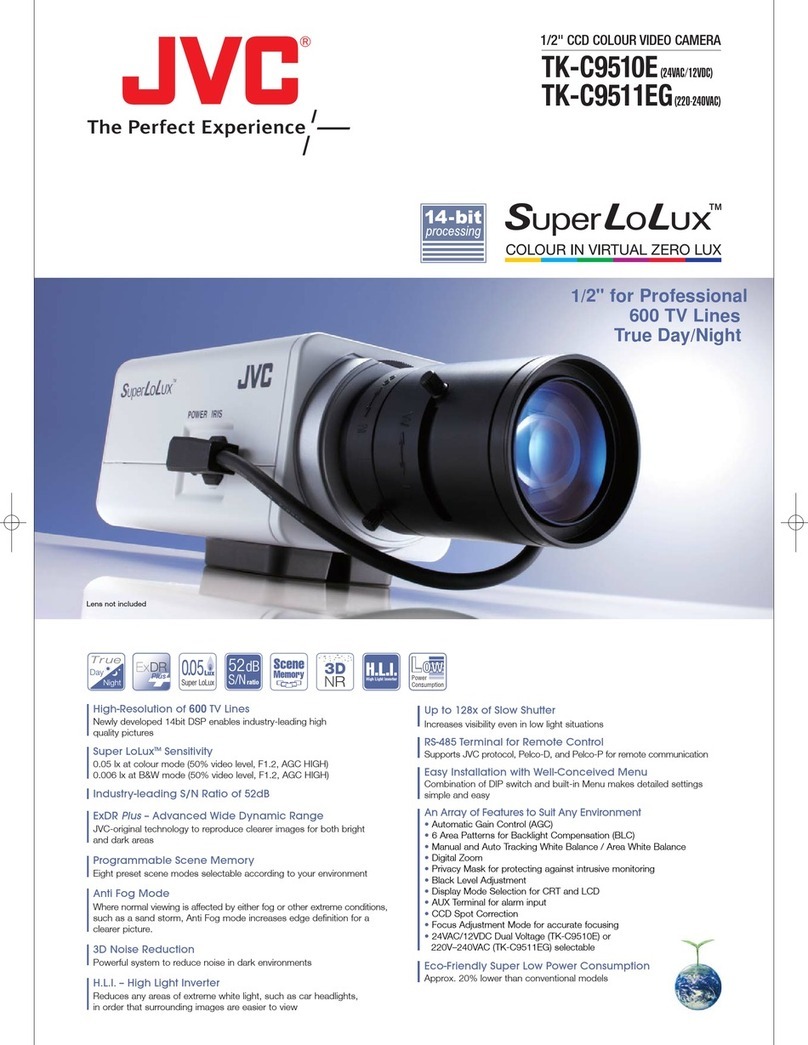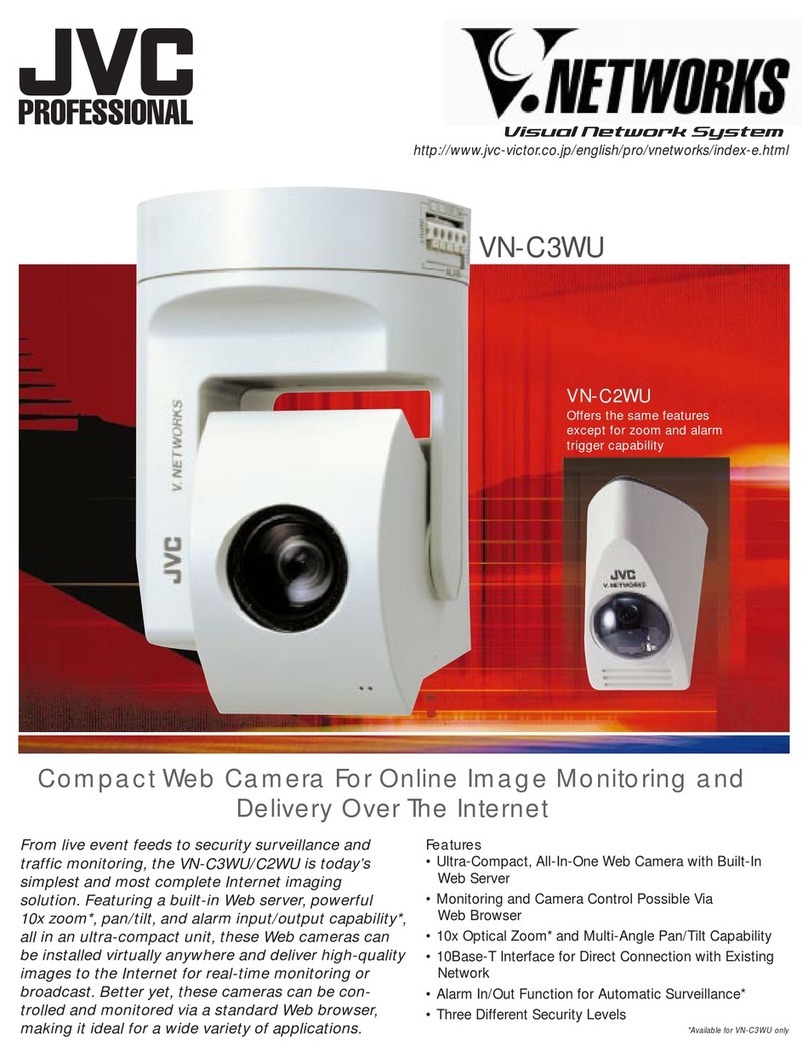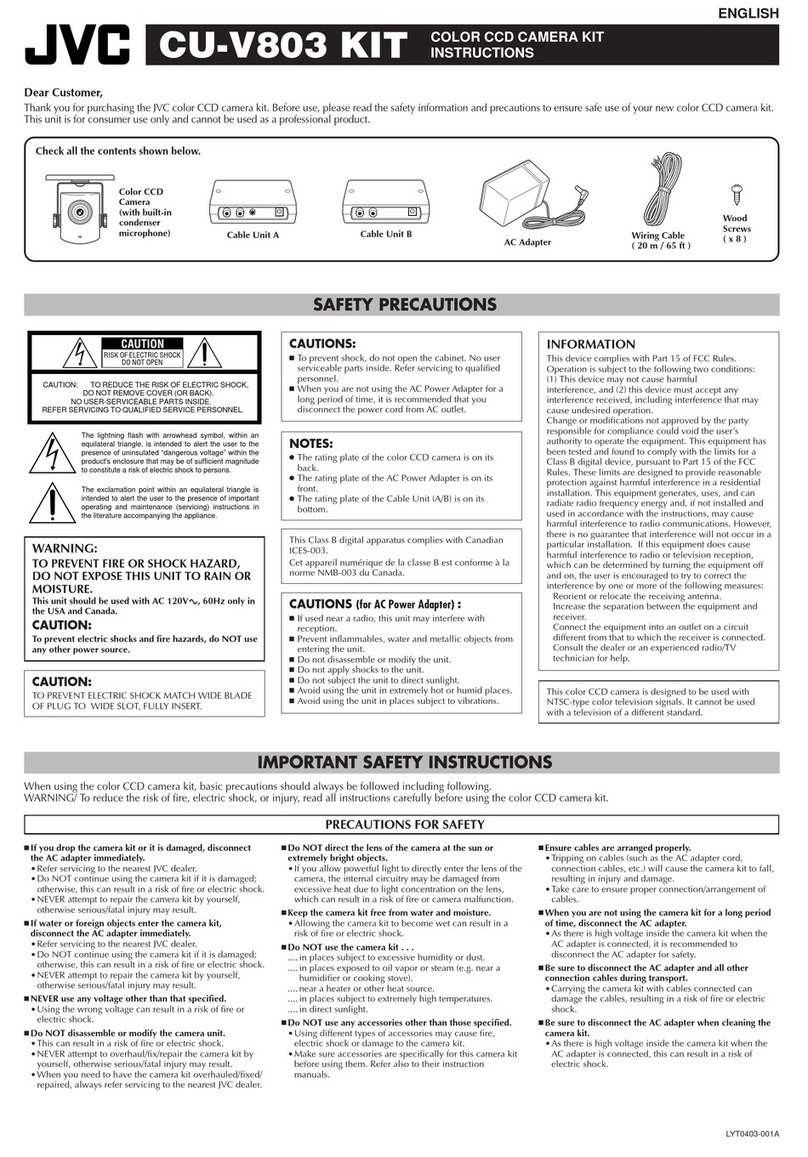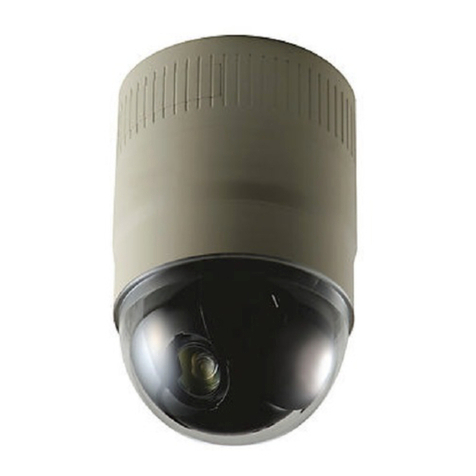
E-4
Features
The unit can be installed directly outdoors
since the dust/drip-proof structure (IP66)
is unaffected by rain.
The unit including the dome cover is
designed for outdoor and indoor areas
that are subject to vandalism.
The camera uses a high-resolution
380,000 pixel (U type) / 440,000 pixel (E
type), high-sensitivity CCD to realize high
picture quality with horizontal resolution
of 535 TV lines and S/N50dB.
Dome-type design allows application in
various locations.
Built-in backlight compensation feature to
improve the quality of video taken under
backlight conditions.
A 4inch square electrical box compatible
Built-in white-spot correction feature
Before starting an important recording,
be sure to perform a test recording in
order to confirm that a normal recording
is possible.
We do not accept liability for the loss of
a recording in the case of it becoming
impossible to record due to a problem
in the video camera, VCR or video tape.
We do not accept liability for any
damage to the camera in cases when
it is dropped because of incomplete
installation due to not observing the
installation instructions correctly.
Please be careful when installing the
camera.
Operating Precautions
●To save energy, when it is not being used
turn the system’s power off.
●This camera has been designed to be
hung from the ceiling. It may malfunction
if it is placed on a surface or if it is tilted.
●Do not install or use the camera in the
following places.
•In a place exposed to heavy rain.
•In a place with vapor or oil soot, for
example in a kitchen.
•In a temperature outside the operating
temperature range (–10°C to 50°C).
•Near a source of radiation, X-rays, strong
radio waves or magnetism.
•In a place where corrosive gasses are
generated.
•In a place subject to vibration.
●If this camera and the cables connected
to this camera are used where there are
strong electromagnetic waves or where
there is magnetism present, for example
near a radio or TV transmitter, power
transformer or an electric motor, the picture
may produce noise and the colours may
be affected.
●This camera incorporates an AGC circuit.
As a result, when it is used under low light
conditions, the camera sensitivity is
automatically boosted and the picture may
look uneven. This is not a malfunction
however.
●The white balance setting when used
under a fluorescent lamp should be ATW
(Auto White).
●When this camera is used in the ATW
mode, the recorded colours may be slightly
different from the actual colours due to the
operational principles of the auto-tracking
white balance circuit. This is however not
a malfunction.
03e_tkc205vp.p65 3/3/04, 11:31 AM4
